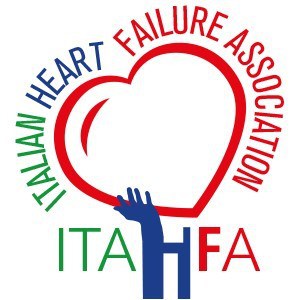"Hello, everybody. I'm here at the Heart Failure Association Congress of the ESC in Lisbon, and I'm very pleased to give you some idea about the RELIEVE HF trial in intra-atrial shunt. My name is Stefan Anker. I'm from Berlin at the Charité medical school. Enjoy the show.
Trial Overview
The RELIEVE HF trial is a sham-controlled trial of using intra-atrial shunts in patients with heart failure across the spectrum of ejection fraction. The importance is that we really try to clarify whether this treatment concept could work either in patients with heart failure preserved ejection fraction and/or in patients with reduced ejection fraction heart failure. This trial basically tries to pave the way for an additional new therapy for these patients at need with quality of life improvements, hopefully, but particularly with reduction in event rates. And this is what we investigated.
Shunt System Description
The shunt system is called a Ventura system. It's a small device put into the septum to allow increased pressures to be relieved from the left atrium and basically organise some flow to the right side, thereby decompressing the heart, making it structurally and functionally better over time, and hopefully over time, then have also benefits for the patient.
Patient Enrolment
Otherwise, we enrolled 508 patients. About 60% were in heart failure patients with preserved ejection fraction, 40% were patients with reduced ejection fraction or heart failure. The patients basically, where, as you classically see, they're more than 70 years old, rather symptomatic, mostly in New York Heart Class III. These patients were heart failure patients, extremely well treated. Just to give you an example, the HFrEF patients had more than 70% in RNA. And so this is the classical modern, today's heart failure patients recruited in eleven countries and is as good as it gets with regards to standard modern heart failure.
Study Findings
Well, this is an interesting study. Overall, we should say that the event rate kind of analysis, combined with the quality of life analysis in the form of a win ratio analysis, showed a neutral result. But the trial was a trial that was designed effectively as two trials in one, one for HFpEF patients and one for HFrEF patients. And using a divider of 40% ejection fraction, both groups of patients were separately randomised. And that's called a stratified randomization.
Subgroup Analysis
And so we investigated the key subgroup of patients with and without this reduced ejection fraction, and we found a dramatic difference in the event rates for the patient with reduced ejection fraction, where the shunt actually reduced them. And unfortunately for the patient with preserved ejection fraction, the event rates were increased. This was to some degree surprising. This was highly significant in terms of having one kind of a result and another kind of result in the two patient groups.
Conclusion and Future Directions
And so we must say that the overall conclusion, as true as it is that we had a neutral finding, needs to be added an asterisk, if you like. There were strong subgroup differences, making it not possible to just say it doesn't work, it just works. In one group of patients, HFrEF patients, shunt therapy might be a little bit more complicated than we thought. We have actually maybe some patients where it absolutely doesn't work and maybe even negative. And we have patients where it does work. And the peers for the Ventura system that this is heart failure patient with reduced ejection fraction.
Of note, there was a previous study with the Corvia system where it was particular patients with low pulmonary vascular resistance on an exercise test, with exercise hemodynamics being assessed. And this was the responder group in their trial. So we need to figure out really who is benefiting. We are optimistic that this can move forward with heart failure patients in reduced ejection fraction, but basically, let's see how everybody reacts to this. Well, there are additional patient cohorts of need, and they will be investigated and the future will tell us really how much we can explore all of this, but definitely more studies will be done.”








Comments